 The Copernicus Atmosphere Monitoring Service (CAMS) has reported that global wildfire emissions from January to November 2025 reached around 1,380 megatonnes of carbon, with record European Union emissions and Canada recording its second highest annual total in the CAMS dataset. CAMS compared the 2025 figure with estimated emissions of 1,850 megatonnes of carbon from January to November 2024 and 1,940 megatonnes over the full year 2024. According to CAMS, Canada contributed an estimated 263 megatonnes of carbon to the 2025 total, with only 2023 recording a higher annual figure in the 23 year dataset that began in 2003. CAMS noted that biomass burning in tropical Africa remains the largest contributor to global biomass burning emissions, and that this region has driven an overall decline over the past two decades because of fewer savanna fires. In contrast, CAMS data show rising emissions in recent years in other regions, including North America between 2023 and 2025 and the record fire season in South America in 2024.
The Copernicus Atmosphere Monitoring Service (CAMS) has reported that global wildfire emissions from January to November 2025 reached around 1,380 megatonnes of carbon, with record European Union emissions and Canada recording its second highest annual total in the CAMS dataset. CAMS compared the 2025 figure with estimated emissions of 1,850 megatonnes of carbon from January to November 2024 and 1,940 megatonnes over the full year 2024. According to CAMS, Canada contributed an estimated 263 megatonnes of carbon to the 2025 total, with only 2023 recording a higher annual figure in the 23 year dataset that began in 2003. CAMS noted that biomass burning in tropical Africa remains the largest contributor to global biomass burning emissions, and that this region has driven an overall decline over the past two decades because of fewer savanna fires. In contrast, CAMS data show rising emissions in recent years in other regions, including North America between 2023 and 2025 and the record fire season in South America in 2024.
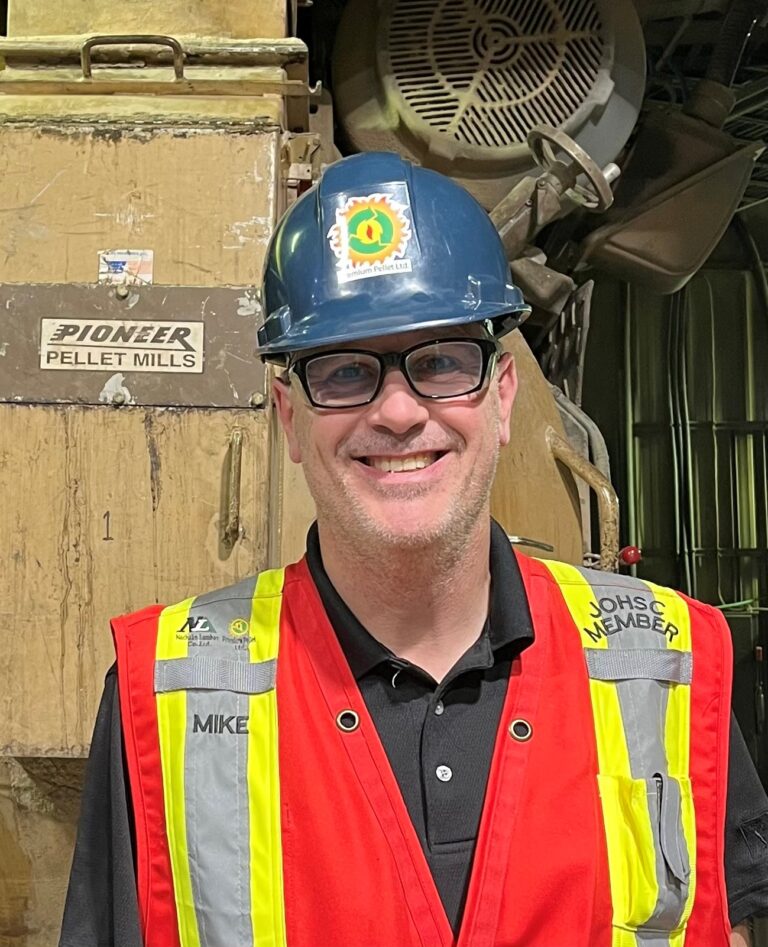
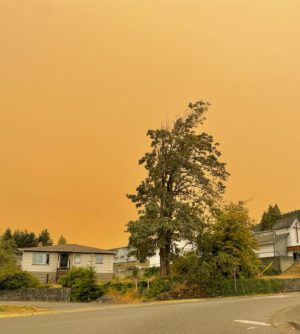

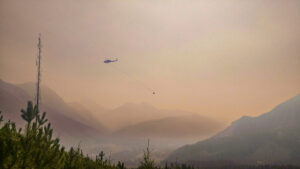 Smoke from record-breaking Canadian wildfires in 2023 caused an estimated 5,400 acute deaths and about 82,100 premature deaths worldwide, a new study shows. The study
Smoke from record-breaking Canadian wildfires in 2023 caused an estimated 5,400 acute deaths and about 82,100 premature deaths worldwide, a new study shows. The study  At its November 2025 meeting, WorkSafeBC’s Board of Directors approved amendments to the Occupational Health and Safety Regulation and the Prevention Manual. The amendments relate to
At its November 2025 meeting, WorkSafeBC’s Board of Directors approved amendments to the Occupational Health and Safety Regulation and the Prevention Manual. The amendments relate to 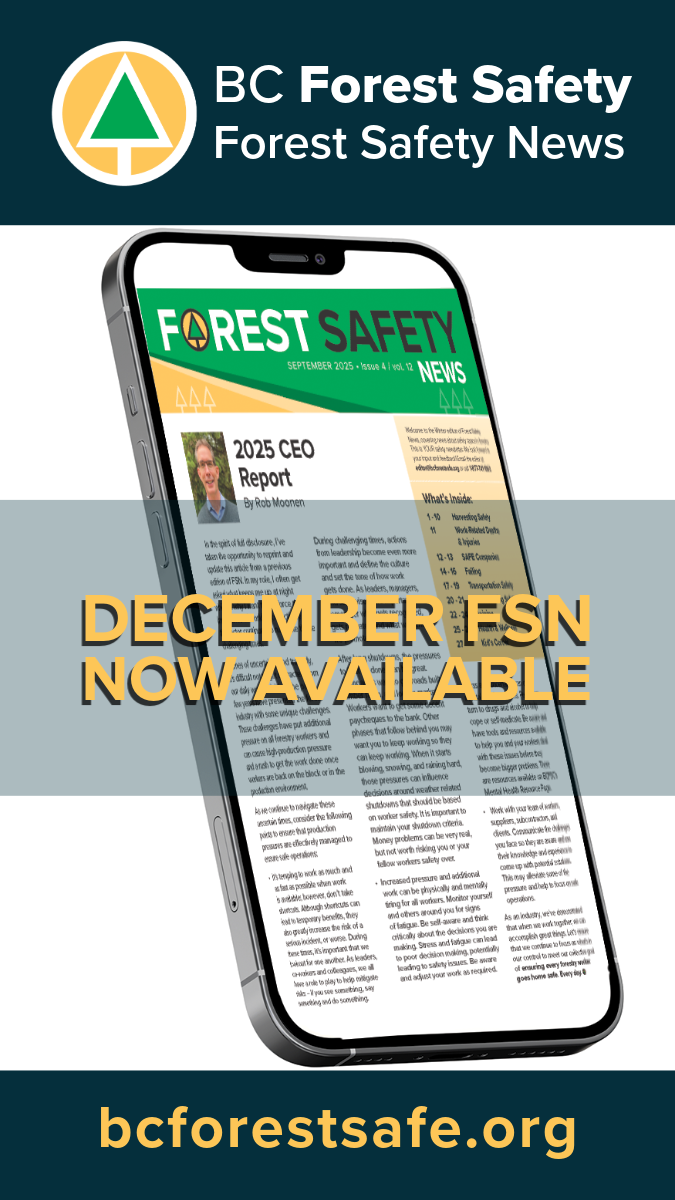 The December issue of Forest Safety News is here, bringing timely insights and practical tools for safer forestry work this winter. One standout feature explores how RPAS drones are transforming field safety, reducing worker exposure during steep-slope layout, post-fire assessments, and difficult terrain navigation. It’s a look at technology that’s not just impressive — it’s making real crews safer in real time. This issue also recaps the 18th Annual Vancouver Island Safety Conference, where powerful keynote speakers shared stories of perseverance, leadership, and the importance of mental and physical well-being. The message was clear: safety culture is built person by person, conversation by conversation. You’ll also find a useful update on winter driving and hauling preparedness, including tips for planning routes, managing changing conditions, and supporting drivers during the toughest season of the year. Packed with practical advice, inspiring stories, and forward-looking innovations, this issue offers a strong finish to 2025 for BC’s forest sector.
The December issue of Forest Safety News is here, bringing timely insights and practical tools for safer forestry work this winter. One standout feature explores how RPAS drones are transforming field safety, reducing worker exposure during steep-slope layout, post-fire assessments, and difficult terrain navigation. It’s a look at technology that’s not just impressive — it’s making real crews safer in real time. This issue also recaps the 18th Annual Vancouver Island Safety Conference, where powerful keynote speakers shared stories of perseverance, leadership, and the importance of mental and physical well-being. The message was clear: safety culture is built person by person, conversation by conversation. You’ll also find a useful update on winter driving and hauling preparedness, including tips for planning routes, managing changing conditions, and supporting drivers during the toughest season of the year. Packed with practical advice, inspiring stories, and forward-looking innovations, this issue offers a strong finish to 2025 for BC’s forest sector.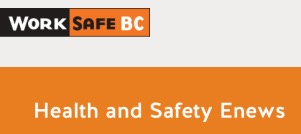 In this newsletter you find these stories and more:
In this newsletter you find these stories and more: Each year, the BC Forest Safety Council honours individuals who go above and beyond to make forestry safer for everyone. Since 2008, the Leadership in Safety Awards have recognised outstanding contributions in three key areas: harvesting, manufacturing and lifetime achievement. These awards honour people who lead by example—those who bring fresh ideas, foster a strong safety culture and consistently put the well-being of others first. …Congratulations to all of this year’s award recipients! Your leadership, care and commitment continue to make BC’s forestry industry safer and stronger. Nominations for the 2026 Leadership in Safety Awards open on January 12, 2026.
Each year, the BC Forest Safety Council honours individuals who go above and beyond to make forestry safer for everyone. Since 2008, the Leadership in Safety Awards have recognised outstanding contributions in three key areas: harvesting, manufacturing and lifetime achievement. These awards honour people who lead by example—those who bring fresh ideas, foster a strong safety culture and consistently put the well-being of others first. …Congratulations to all of this year’s award recipients! Your leadership, care and commitment continue to make BC’s forestry industry safer and stronger. Nominations for the 2026 Leadership in Safety Awards open on January 12, 2026.
 WorkSafeBC has fined the Provincial Government over $750,000 in connection with a pair of incidents involving the BC Wildfire Service that date back to 2023. An administrative penalty of $759,369 was levied on Sept. 25 following investigations into the two incidents – one of which led to the death of a firefighter near Fort St. John, while the other could have killed or injured multiple firefighters in the North Shuswap. In that North Shuswap incident, previous inspection reports by WorkSafeBC determined that a group of five Brazilian firefighters became “trapped by extreme fire behavior” during a planned ignition. …WorkSafeBC determined that a lack of planning, training, and communication were all contributing factors. …The other incident dates back to July 28, 2023, when 25-year-old firefighter, Zak Muise, was killed while fighting the Donnie Creek fire. WorkSafeBC determined that neither worker was wearing a helmet, the passenger had not been using a seatbelt, and the passenger-side retention netting had been damaged.
WorkSafeBC has fined the Provincial Government over $750,000 in connection with a pair of incidents involving the BC Wildfire Service that date back to 2023. An administrative penalty of $759,369 was levied on Sept. 25 following investigations into the two incidents – one of which led to the death of a firefighter near Fort St. John, while the other could have killed or injured multiple firefighters in the North Shuswap. In that North Shuswap incident, previous inspection reports by WorkSafeBC determined that a group of five Brazilian firefighters became “trapped by extreme fire behavior” during a planned ignition. …WorkSafeBC determined that a lack of planning, training, and communication were all contributing factors. …The other incident dates back to July 28, 2023, when 25-year-old firefighter, Zak Muise, was killed while fighting the Donnie Creek fire. WorkSafeBC determined that neither worker was wearing a helmet, the passenger had not been using a seatbelt, and the passenger-side retention netting had been damaged.
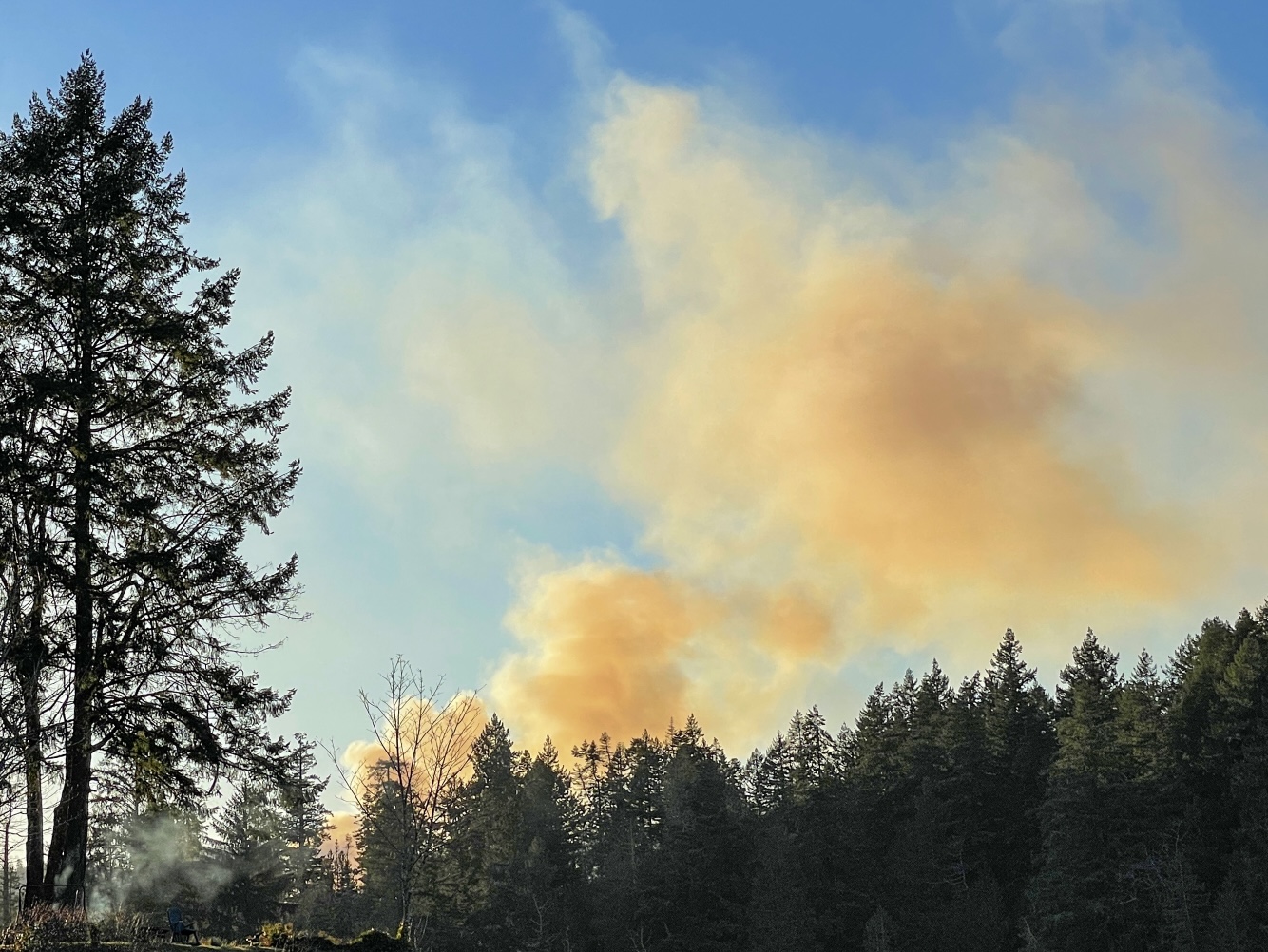 There’s been a cool edge to the air the last week or so. You may have noticed something else in the air, too — smoke. Unfortunately for those with health conditions like respiratory problems and heart disease, and for those who don’t want to develop them, two jurisdictions in the Cowichan Valley still allow at least some backyard burning, and wood burning appliances are still common everywhere in the Cowichan Valley Regional District. The Town of Ladysmith, City of Duncan and Town of Lake Cowichan have completely banned backyard burning. The Municipality of North Cowichan has cut back on what it allows, but there are still large swaths of territory within its boundaries where lighting up a burn pile is still allowed. … Cowichan’s transfer stations accept yard waste free of charge, so people can take their debris there instead of lighting it up. So consider your alternatives, and the people around you before you burn. Smoke travels.
There’s been a cool edge to the air the last week or so. You may have noticed something else in the air, too — smoke. Unfortunately for those with health conditions like respiratory problems and heart disease, and for those who don’t want to develop them, two jurisdictions in the Cowichan Valley still allow at least some backyard burning, and wood burning appliances are still common everywhere in the Cowichan Valley Regional District. The Town of Ladysmith, City of Duncan and Town of Lake Cowichan have completely banned backyard burning. The Municipality of North Cowichan has cut back on what it allows, but there are still large swaths of territory within its boundaries where lighting up a burn pile is still allowed. … Cowichan’s transfer stations accept yard waste free of charge, so people can take their debris there instead of lighting it up. So consider your alternatives, and the people around you before you burn. Smoke travels.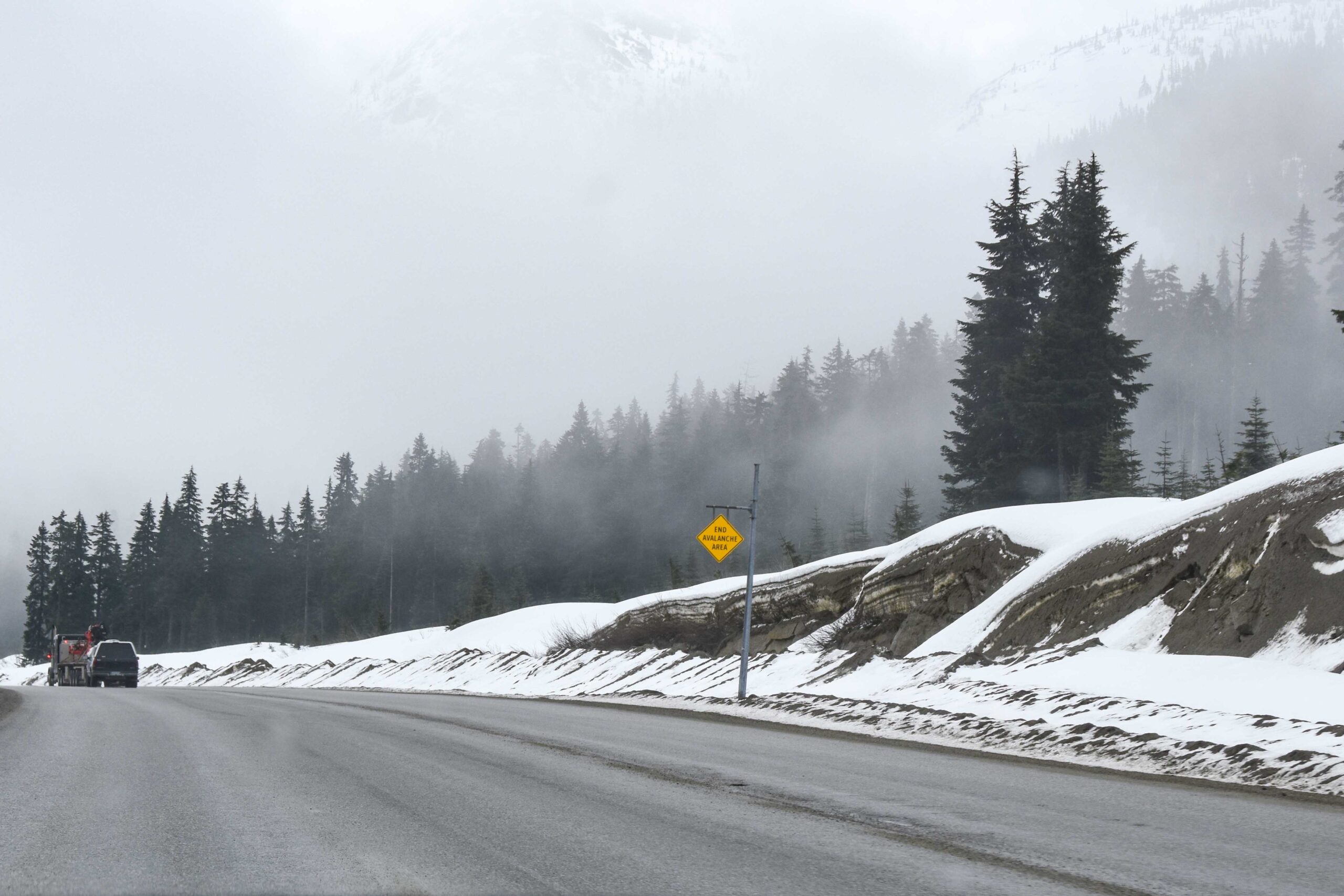 Does your workplace safety program include steps to reduce the risks your drivers face when driving on the job in winter? It needs to. Your safety responsibilities don’t change with the seasons. But you do need to address the additional driving hazards created by winter road and weather conditions. Some of the biggest hazards for log haulers include:
Does your workplace safety program include steps to reduce the risks your drivers face when driving on the job in winter? It needs to. Your safety responsibilities don’t change with the seasons. But you do need to address the additional driving hazards created by winter road and weather conditions. Some of the biggest hazards for log haulers include: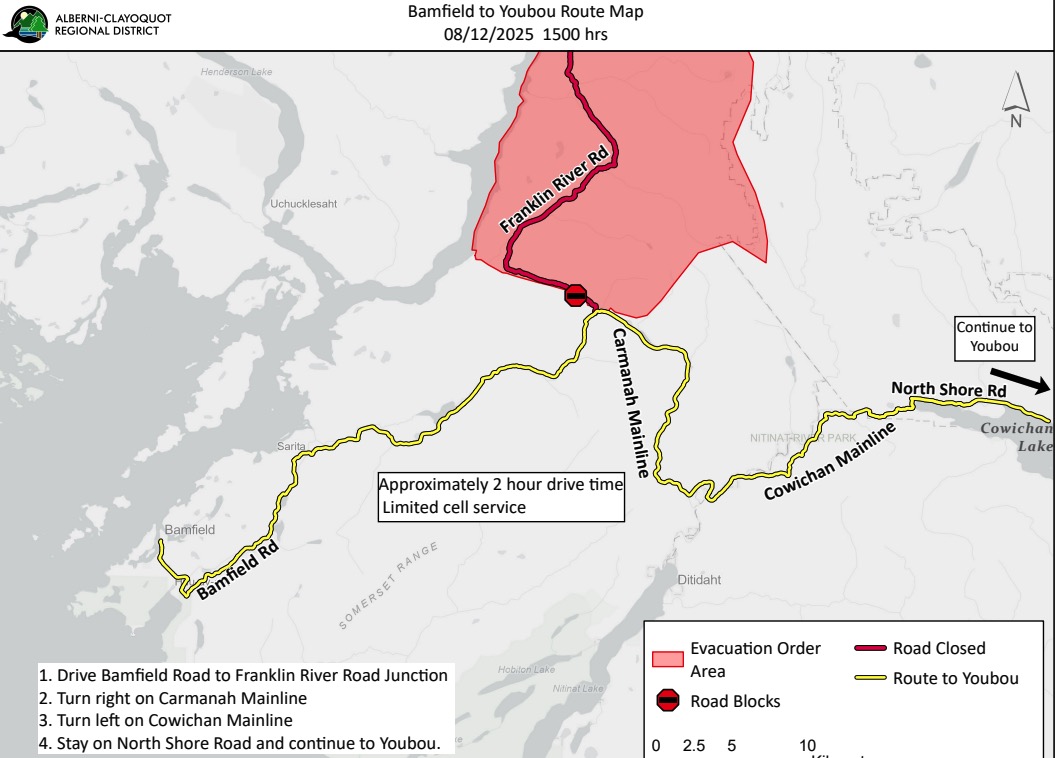 Since Aug. 11, the Bamfield Main Road has been closed. …When the Mount Underwood wildfire broke out, that road had to be closed because of a blaze raging nearby. …Bamfield-area residents have to travel more than four hours to get to Port Alberni. …Another point of frustration for the people on the other side of the closure is the existence of a logging road owned by Mosaic Forest Management, a section of that road goes around the Bamfield Main Road closure. Harrison said she and a small group of other people drove the road to check it out. …”The Youbou Road is 100 times worse than that little 20-minute bypass road,” claimed resident Sherry Harrison. …The ministry said the road owned by Mosaic is private and public use is up to the discretion of the company, but added those logging roads were not built and are not maintained for public use.
Since Aug. 11, the Bamfield Main Road has been closed. …When the Mount Underwood wildfire broke out, that road had to be closed because of a blaze raging nearby. …Bamfield-area residents have to travel more than four hours to get to Port Alberni. …Another point of frustration for the people on the other side of the closure is the existence of a logging road owned by Mosaic Forest Management, a section of that road goes around the Bamfield Main Road closure. Harrison said she and a small group of other people drove the road to check it out. …”The Youbou Road is 100 times worse than that little 20-minute bypass road,” claimed resident Sherry Harrison. …The ministry said the road owned by Mosaic is private and public use is up to the discretion of the company, but added those logging roads were not built and are not maintained for public use.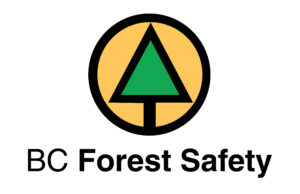 REVELSTOKE, BC — A BC forestry worker was fatally injured while on the job last week, an industry safety group said Tuesday. “A skidder operator was fatally injured when their skidder rolled down a steep slope in an area north of Revelstoke,” the BC Forest Safety Council said of the Sept. 16 incident. “WorkSafeBC and the Coroners Service are currently investigating this incident.” It’s the fifth harvesting fatality in 2025 and BC Forestry said details are still to be determined. Contributing factors to the incident are not available during an ongoing investigation. The BC Forest Safety Council said they have several safety points to be considered as the process unfolds. Those include a thorough assessment before work begins to prepare operators for steep slope logging operations. …Maintain safety buffers by not operating on the steepest possible slopes. This helps operators recover when surprised by an unexpected event.
REVELSTOKE, BC — A BC forestry worker was fatally injured while on the job last week, an industry safety group said Tuesday. “A skidder operator was fatally injured when their skidder rolled down a steep slope in an area north of Revelstoke,” the BC Forest Safety Council said of the Sept. 16 incident. “WorkSafeBC and the Coroners Service are currently investigating this incident.” It’s the fifth harvesting fatality in 2025 and BC Forestry said details are still to be determined. Contributing factors to the incident are not available during an ongoing investigation. The BC Forest Safety Council said they have several safety points to be considered as the process unfolds. Those include a thorough assessment before work begins to prepare operators for steep slope logging operations. …Maintain safety buffers by not operating on the steepest possible slopes. This helps operators recover when surprised by an unexpected event. There are fresh calls for an alternative route to the west coast of Vancouver Island after it emerged the main route between Port Alberni and Bamfield, B.C., is closed indefinitely. …The only alternative is a logging road detour through Youbou in the Cowichan Valley. …Ditidaht First Nation Chief Councillor Judi Thomas said she hopes the province will go further and redesignate the forest service industrial road as a provincial road and fast-track investment. But the Ministry of Transportation and Transit said, “there is mixed ownership of the road(s) in this area, but all are private industrial roads, and the ministry has no plans to take over the ownership”. …The province says it’s working with Mosaic Forest Management, which is responsible for maintaining 15 kilometres of Bamfield Road, to beef up maintenance on the detour road . …D’Arcy Henderson, Mosaic’s chief operating officer, said it was working with stakeholders on maintaining that detour route.
There are fresh calls for an alternative route to the west coast of Vancouver Island after it emerged the main route between Port Alberni and Bamfield, B.C., is closed indefinitely. …The only alternative is a logging road detour through Youbou in the Cowichan Valley. …Ditidaht First Nation Chief Councillor Judi Thomas said she hopes the province will go further and redesignate the forest service industrial road as a provincial road and fast-track investment. But the Ministry of Transportation and Transit said, “there is mixed ownership of the road(s) in this area, but all are private industrial roads, and the ministry has no plans to take over the ownership”. …The province says it’s working with Mosaic Forest Management, which is responsible for maintaining 15 kilometres of Bamfield Road, to beef up maintenance on the detour road . …D’Arcy Henderson, Mosaic’s chief operating officer, said it was working with stakeholders on maintaining that detour route.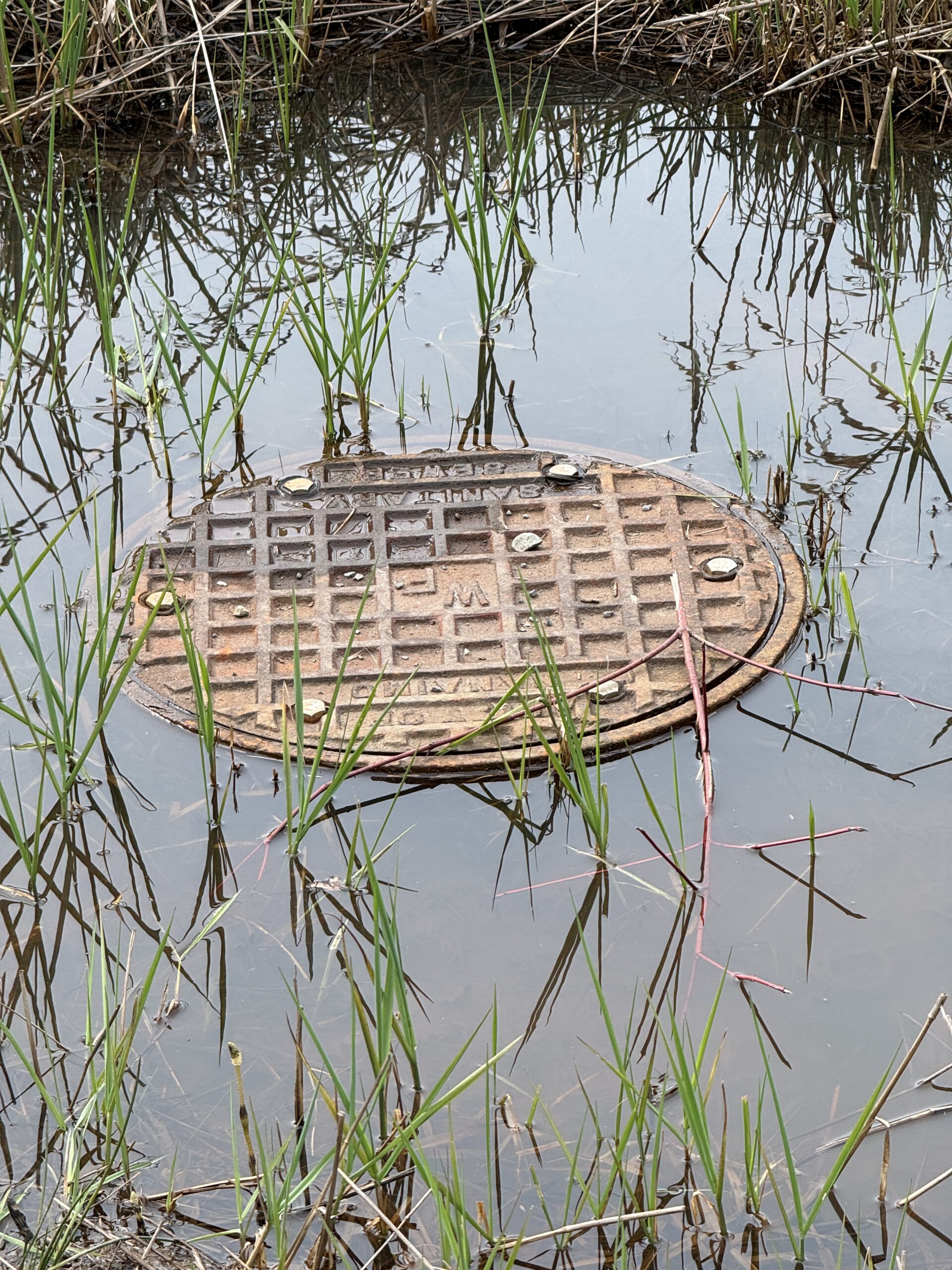 Thunder Bay – For more than 100 years, the pulp and paper mill in Dryden has been the most important building in this small city in northwestern Ontario. It was the engine of the local economy, providing jobs for generations and connecting Dryden to a larger network of forest products that includes Thunder Bay and other communities in the area. But the same industrial complex also caused one of Canada’s worst environmental disasters. In the 1960s and 1970s, a chlor-alkali plant that was part of the mill dumped an estimated 9,000 to 10,000 kilograms (about 10 metric tons) of mercury into the English–Wabigoon River system. …People have lived with symptoms of mercury poisoning for generations, including Minamata disease. Commercial fishing was stopped, and guiding jobs disappeared. The main question is still painfully unanswered decades later: Who should pay to clean up the river, fix the land, and help the people who were hurt?
Thunder Bay – For more than 100 years, the pulp and paper mill in Dryden has been the most important building in this small city in northwestern Ontario. It was the engine of the local economy, providing jobs for generations and connecting Dryden to a larger network of forest products that includes Thunder Bay and other communities in the area. But the same industrial complex also caused one of Canada’s worst environmental disasters. In the 1960s and 1970s, a chlor-alkali plant that was part of the mill dumped an estimated 9,000 to 10,000 kilograms (about 10 metric tons) of mercury into the English–Wabigoon River system. …People have lived with symptoms of mercury poisoning for generations, including Minamata disease. Commercial fishing was stopped, and guiding jobs disappeared. The main question is still painfully unanswered decades later: Who should pay to clean up the river, fix the land, and help the people who were hurt?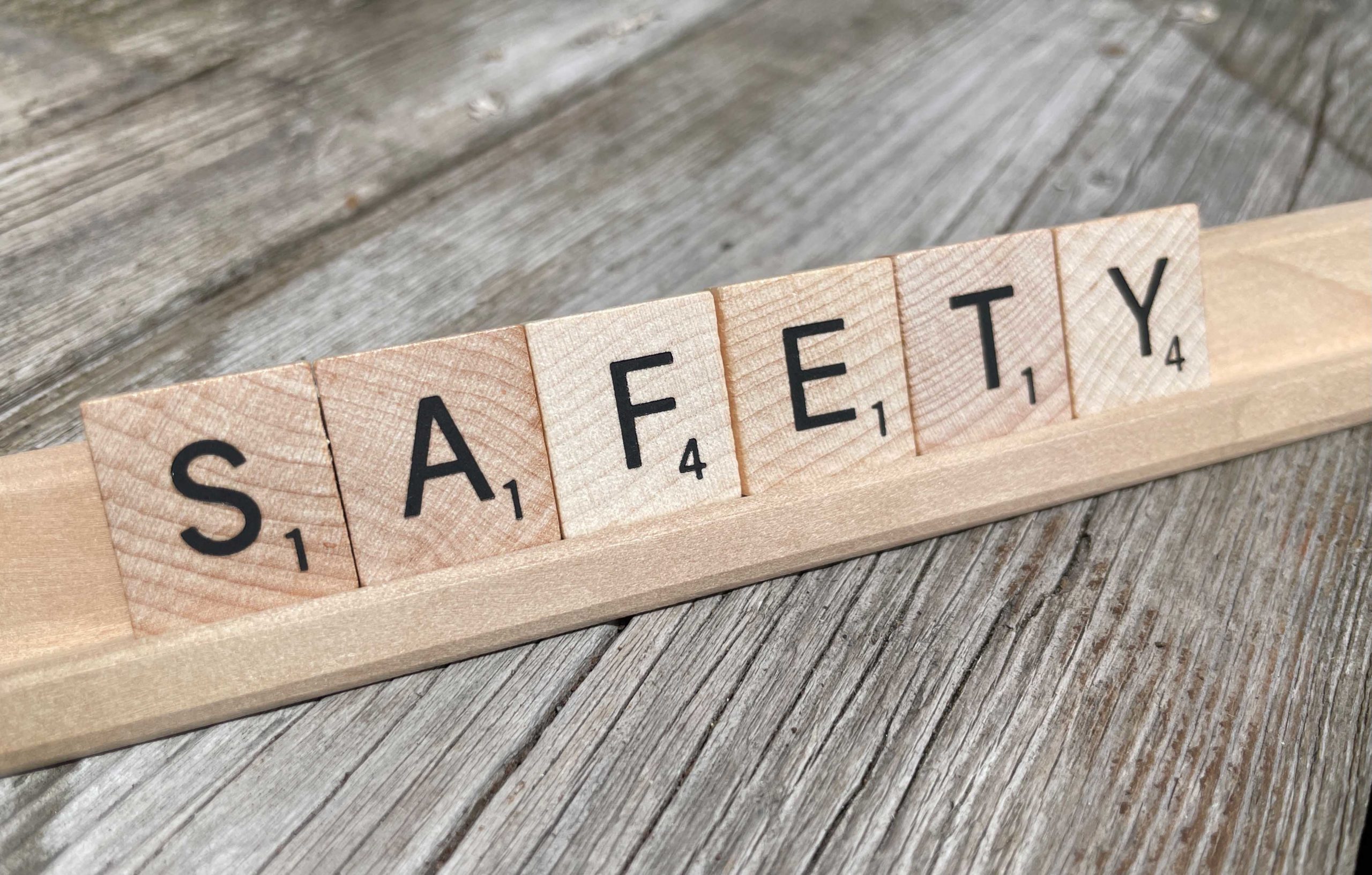 Quebec’s workers’ safety board (CNESST) concluded that driving a forestry vehicle that had no seat belt or complete door contributed to the death of a worker in Saint-Côme-Linière, in the Chaudière-Appalaches region. The forestry worker died in a workplace accident on Jan. 6 while reversing a vehicle known as a skidder, according to the Commission des normes, de l’équité, de la santé et de la sécurité du travail (CNESST). During the maneuver, the vehicle backed up onto the stump of a felled tree, causing vibrations that ejected the worker from the cab. The man was crushed by the front wheel of the skidder. In its report, the CNESST concluded that “operating a skidder that is not equipped with seat belts or full doors violates section 21 of the Regulation respecting occupational health and safety in forest development work.”
Quebec’s workers’ safety board (CNESST) concluded that driving a forestry vehicle that had no seat belt or complete door contributed to the death of a worker in Saint-Côme-Linière, in the Chaudière-Appalaches region. The forestry worker died in a workplace accident on Jan. 6 while reversing a vehicle known as a skidder, according to the Commission des normes, de l’équité, de la santé et de la sécurité du travail (CNESST). During the maneuver, the vehicle backed up onto the stump of a felled tree, causing vibrations that ejected the worker from the cab. The man was crushed by the front wheel of the skidder. In its report, the CNESST concluded that “operating a skidder that is not equipped with seat belts or full doors violates section 21 of the Regulation respecting occupational health and safety in forest development work.”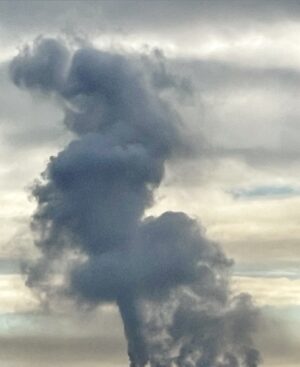 The
The 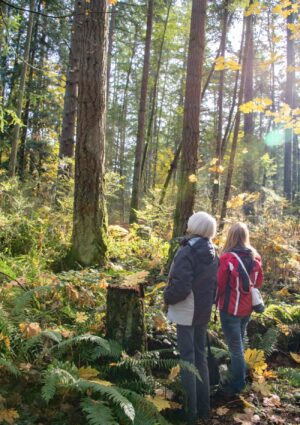 BOSTON — Susan Abookire, an internist and professor at Harvard Medical School, had a cure for all that ailed me. But I was going to have a difficult time getting her prescription filled at CVS. …I was participating, somewhat skeptically, in a forest bathing session Abookire was leading at Harvard’s Arnold Arboretum for seven young doctors. It’s part of resident training at Harvard-affiliated Brigham and Women’s Hospital, which is looking for ways to reduce stress and burnout within the profession. …Before I looked into forest bathing, I had feared it might be another goofy wellness fad like Gwyneth Paltrow’s jade eggs and Tucker Carlson’s genital tanning. But here was a doctor from a top medical school guiding some of the brightest young medical minds into the woods. …So I did what the doctor ordered. I introduced myself to a mushroom. [to access the full story a Washington Post subscription is required]
BOSTON — Susan Abookire, an internist and professor at Harvard Medical School, had a cure for all that ailed me. But I was going to have a difficult time getting her prescription filled at CVS. …I was participating, somewhat skeptically, in a forest bathing session Abookire was leading at Harvard’s Arnold Arboretum for seven young doctors. It’s part of resident training at Harvard-affiliated Brigham and Women’s Hospital, which is looking for ways to reduce stress and burnout within the profession. …Before I looked into forest bathing, I had feared it might be another goofy wellness fad like Gwyneth Paltrow’s jade eggs and Tucker Carlson’s genital tanning. But here was a doctor from a top medical school guiding some of the brightest young medical minds into the woods. …So I did what the doctor ordered. I introduced myself to a mushroom. [to access the full story a Washington Post subscription is required]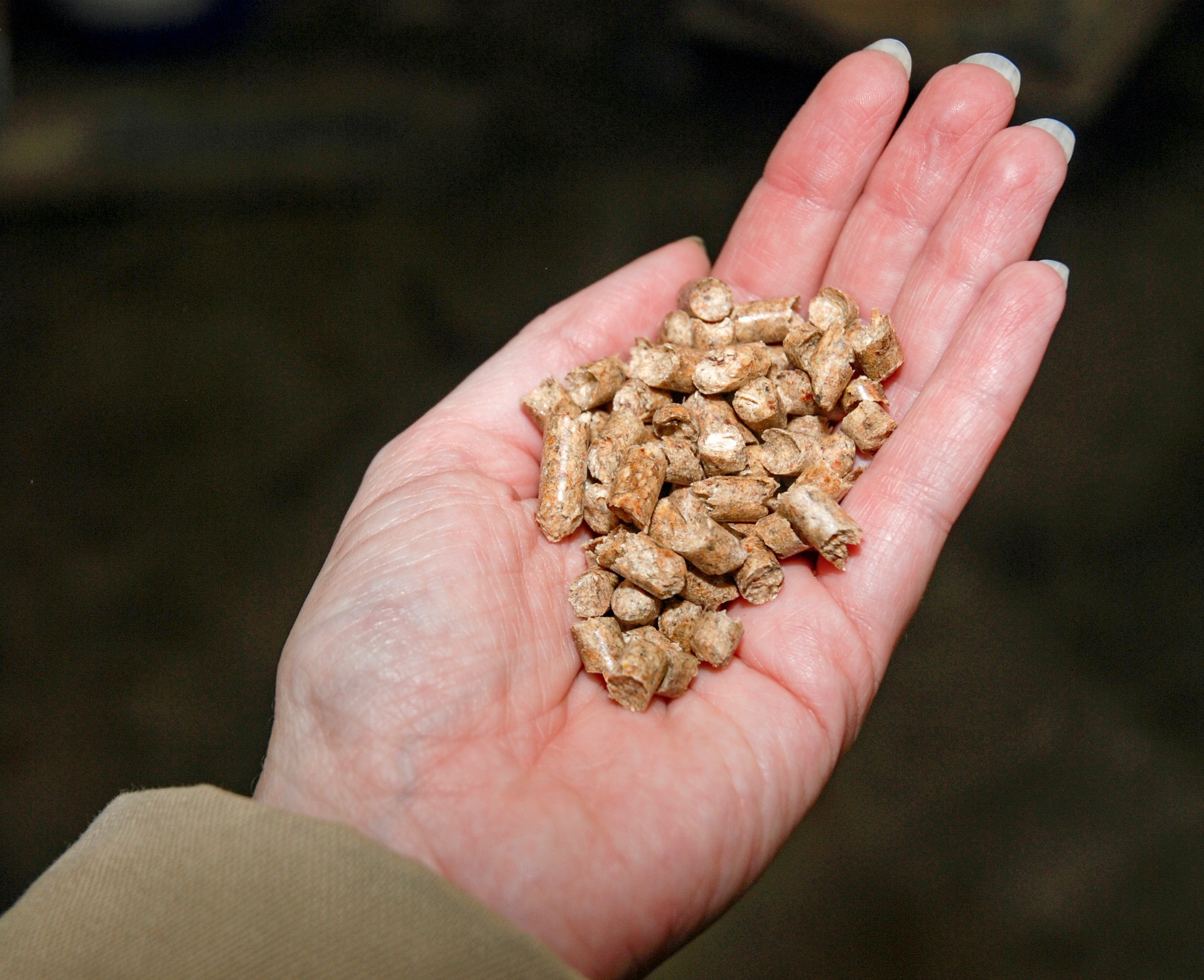 Ten lawsuits have been filed against Drax after diagnoses of asthma allegedly linked to its wood pellet fuel, it has been revealed. Current and former workers at the UK’s largest power station claim they have not been adequately protected against sustained exposure to wood dust, which can cause serious health problems including asthma, dermatitis and nasal cancer. Six compensation claims were settled out of court and four have trial dates in 2026, an investigation by Land and Climate Review found. A class action lawsuit was also filed against the company this month over health concerns in the US, representing 700 people who live near one of Drax’s wood pellet mills in Mississippi. The company is also being investigated by the UK Financial Conduct Authority over “historical statements” made about its wood pellet fuel.
Ten lawsuits have been filed against Drax after diagnoses of asthma allegedly linked to its wood pellet fuel, it has been revealed. Current and former workers at the UK’s largest power station claim they have not been adequately protected against sustained exposure to wood dust, which can cause serious health problems including asthma, dermatitis and nasal cancer. Six compensation claims were settled out of court and four have trial dates in 2026, an investigation by Land and Climate Review found. A class action lawsuit was also filed against the company this month over health concerns in the US, representing 700 people who live near one of Drax’s wood pellet mills in Mississippi. The company is also being investigated by the UK Financial Conduct Authority over “historical statements” made about its wood pellet fuel. 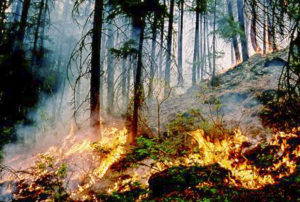 The US Forest Service will begin providing wildfire crews with masks to protect against smoke, reversing a decades-long policy banning protective gear after The NY Times spotlighted severe health impacts from smoke exposure. For decades, federal wildland firefighters were not given masks, even as researchers and labor groups warned of the long-term risks, the Times found. The Forest Service said masks could cause firefighters to overheat. …The agency now recommends masks for light use, though still bans it for arduous work. …FireRescue1 readers respond: “The policy is preposterous. No one makes such excuses for structural firefighting, where the heat load is much, much greater.” …“Heat stress is a short-term condition that can be immediately remedied by mandatory rest and work cycle adjustment. Lung issues usually last forever. A better respirator that is slimmer, lighter and maintainable needs to be created and the forest service needs to use them.
The US Forest Service will begin providing wildfire crews with masks to protect against smoke, reversing a decades-long policy banning protective gear after The NY Times spotlighted severe health impacts from smoke exposure. For decades, federal wildland firefighters were not given masks, even as researchers and labor groups warned of the long-term risks, the Times found. The Forest Service said masks could cause firefighters to overheat. …The agency now recommends masks for light use, though still bans it for arduous work. …FireRescue1 readers respond: “The policy is preposterous. No one makes such excuses for structural firefighting, where the heat load is much, much greater.” …“Heat stress is a short-term condition that can be immediately remedied by mandatory rest and work cycle adjustment. Lung issues usually last forever. A better respirator that is slimmer, lighter and maintainable needs to be created and the forest service needs to use them.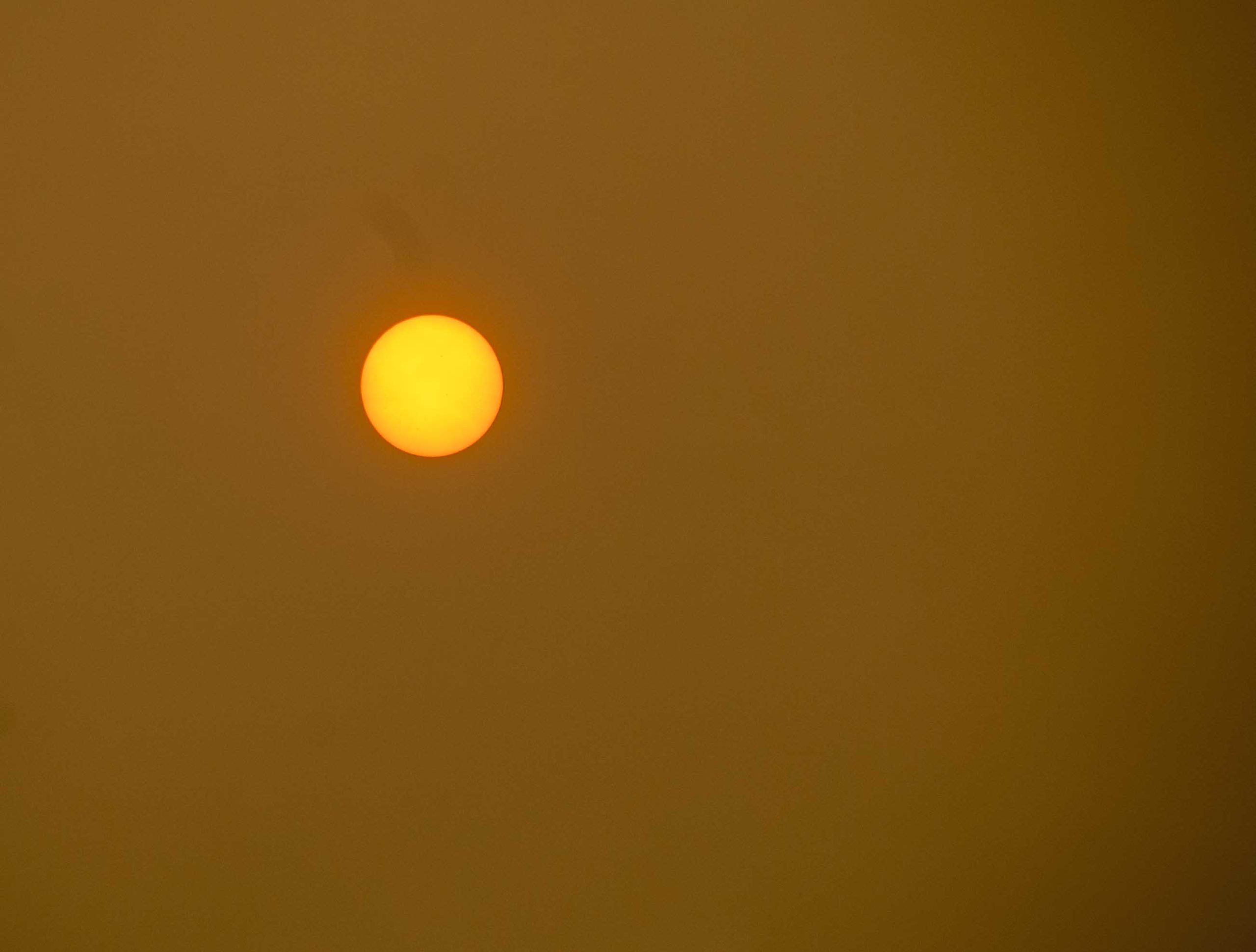 Smoke from wildfires causes a cascade of changes in the proteins in the blood of firefighters, according to a groundbreaking study by researchers from the University of Arizona School of Public Health. The researchers found 60 different changes in blood proteins in samples taken from 42 firefighters who battled the Los Angeles wildfires that charred 23,000 acres and forced 10,000 people to flee their homes. Those changes in serum proteome are associated with a potential increased risk of cancer, abnormal cell growth, immune system dysfunction and inflammatory response. …The findings are the latest to highlight the health risks facing wildland firefighters, who for decades have actually been barred from wearing protective masks on the fire lines for fear it would limit their work and lead to overheating. The Forest Service recently shifted its policy to allow firefighters to wear masks if they choose.
Smoke from wildfires causes a cascade of changes in the proteins in the blood of firefighters, according to a groundbreaking study by researchers from the University of Arizona School of Public Health. The researchers found 60 different changes in blood proteins in samples taken from 42 firefighters who battled the Los Angeles wildfires that charred 23,000 acres and forced 10,000 people to flee their homes. Those changes in serum proteome are associated with a potential increased risk of cancer, abnormal cell growth, immune system dysfunction and inflammatory response. …The findings are the latest to highlight the health risks facing wildland firefighters, who for decades have actually been barred from wearing protective masks on the fire lines for fear it would limit their work and lead to overheating. The Forest Service recently shifted its policy to allow firefighters to wear masks if they choose.
 A firefighter from Minnesota died Friday while helping the United States Forest Service with a controlled burn in Idaho, officials say. The Idaho Department of Lands (IDL) says Isabella Oscarson had been struck by a falling tree while assisting the U.S. Forest Service’s Tinker Bugs with a prescribed fire in the Nez Perce-Clearwater National Forests. She was evacuated from the scene and flown to a hospital in Grangeville, Idaho, where she later died. Oscarson was a seasonal employee with the IDL. “IDL extends its deepest sympathies to Isabella’s family and friends. This is a tragedy that hits the employees at Idaho Department of Lands and the broader wildland fire community extremely hard,” Dustin Miller, director of IDL, said. Idaho Gov. Brad Little ordered flags to be lowered to half-staff to honor Oscarson until the day following her memorial service.
A firefighter from Minnesota died Friday while helping the United States Forest Service with a controlled burn in Idaho, officials say. The Idaho Department of Lands (IDL) says Isabella Oscarson had been struck by a falling tree while assisting the U.S. Forest Service’s Tinker Bugs with a prescribed fire in the Nez Perce-Clearwater National Forests. She was evacuated from the scene and flown to a hospital in Grangeville, Idaho, where she later died. Oscarson was a seasonal employee with the IDL. “IDL extends its deepest sympathies to Isabella’s family and friends. This is a tragedy that hits the employees at Idaho Department of Lands and the broader wildland fire community extremely hard,” Dustin Miller, director of IDL, said. Idaho Gov. Brad Little ordered flags to be lowered to half-staff to honor Oscarson until the day following her memorial service.

 GLOSTER, Miss. — A group of Gloster residents has filed a federal lawsuit against Drax Biomass and its subsidiaries, alleging that the company’s Amite BioEnergy wood pellet facility in the town has unlawfully released massive amounts of toxic pollutants into their community, violating the federal Clean Air Act and Mississippi law. According to a statement from the law firm that filed the claim, Singleton Schreiber, the lawsuit seeks “injunctive relief, civil penalties, and damages for the harm plaintiffs have suffered, including diminished property values, and the loss of safe use and enjoyment of their homes.” Drax responded to inquiries with the following statement: “We are aware of the lawsuit filed in Mississippi. While we cannot comment on the details of ongoing legal matters, our commitment to the communities where we operate remains unchanged. We strive to be a good neighbor in our communities and to support their wellbeing and prosperity.”
GLOSTER, Miss. — A group of Gloster residents has filed a federal lawsuit against Drax Biomass and its subsidiaries, alleging that the company’s Amite BioEnergy wood pellet facility in the town has unlawfully released massive amounts of toxic pollutants into their community, violating the federal Clean Air Act and Mississippi law. According to a statement from the law firm that filed the claim, Singleton Schreiber, the lawsuit seeks “injunctive relief, civil penalties, and damages for the harm plaintiffs have suffered, including diminished property values, and the loss of safe use and enjoyment of their homes.” Drax responded to inquiries with the following statement: “We are aware of the lawsuit filed in Mississippi. While we cannot comment on the details of ongoing legal matters, our commitment to the communities where we operate remains unchanged. We strive to be a good neighbor in our communities and to support their wellbeing and prosperity.” Four people were taken to hospital in the US on 12 September after an explosion at the Fiberon site in Stanly County, North Carolina. Initial inspections of the facility, which manufactures composite decking and railing products, suggest the incident was a result of a dust explosion, officials said. …Several people received treatment at the site for minor injuries with four Fiberon employees taken to a local hospital. Fire crews managed to bring a small fire under control and extinguished it within a couple of hours. In a statement, the Stanly County Fire Marshal’s Office said an investigation was already underway involving several agencies… According to local media, the explosion wasn’t the first fire-related incident at the site. In 2020, several silos and a dust collector caught fire which resulted in a number of small explosions. No employees were injured, however two firefighters were hurt while attempting to extinguish a fire the following day.
Four people were taken to hospital in the US on 12 September after an explosion at the Fiberon site in Stanly County, North Carolina. Initial inspections of the facility, which manufactures composite decking and railing products, suggest the incident was a result of a dust explosion, officials said. …Several people received treatment at the site for minor injuries with four Fiberon employees taken to a local hospital. Fire crews managed to bring a small fire under control and extinguished it within a couple of hours. In a statement, the Stanly County Fire Marshal’s Office said an investigation was already underway involving several agencies… According to local media, the explosion wasn’t the first fire-related incident at the site. In 2020, several silos and a dust collector caught fire which resulted in a number of small explosions. No employees were injured, however two firefighters were hurt while attempting to extinguish a fire the following day.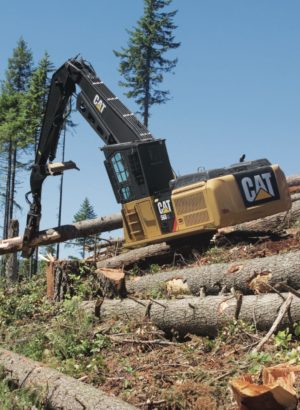 Mechanization has reduced fatal injuries for loggers in the northeastern United States but introduced new health risks linked to prolonged equipment use, according to interviews with 29 loggers across New York, Pennsylvania, and West Virginia. Participants reported concerns over weight gain, back pain, and cardiovascular risks from extended sedentary work, as well as mental stress from financial burdens and limited access to affordable health insurance. The findings come
Mechanization has reduced fatal injuries for loggers in the northeastern United States but introduced new health risks linked to prolonged equipment use, according to interviews with 29 loggers across New York, Pennsylvania, and West Virginia. Participants reported concerns over weight gain, back pain, and cardiovascular risks from extended sedentary work, as well as mental stress from financial burdens and limited access to affordable health insurance. The findings come